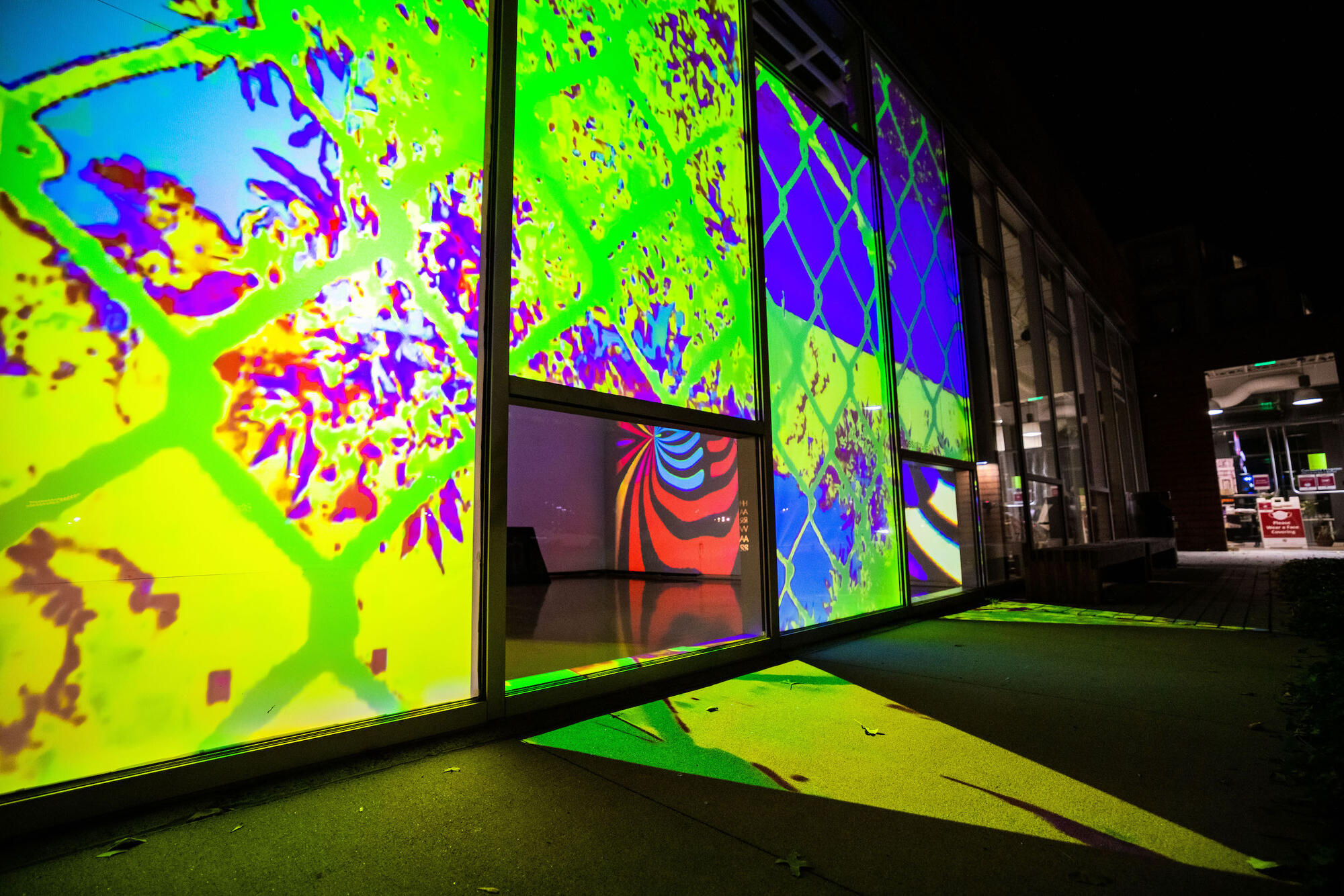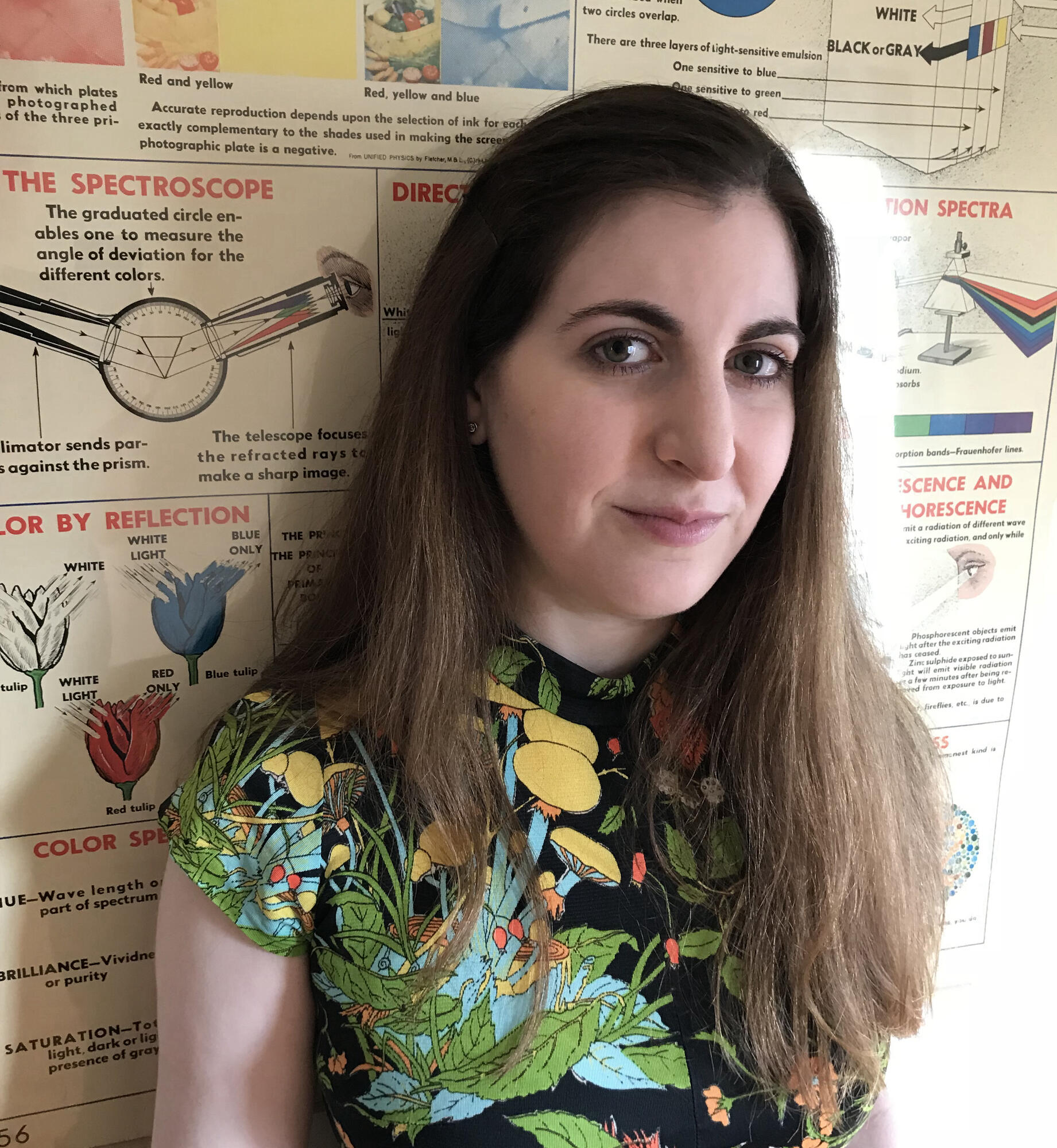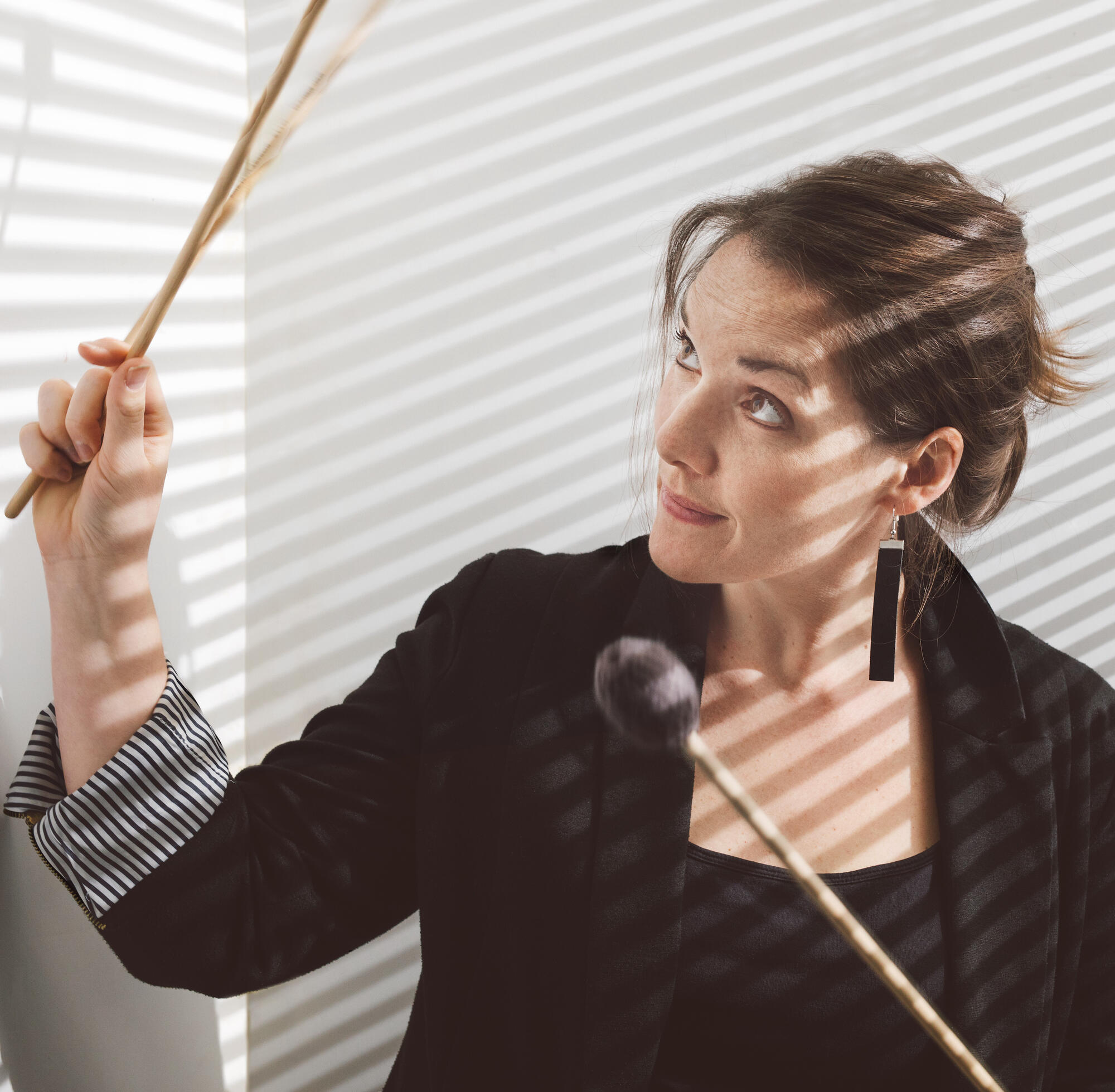FREQUENCIES
Experience FREQUENCIES every night at the Harvard Ed Portal anytime from 5pm–10pm, now through February 28.
What's the frequency of our city? What's your daily rhythm? Are we all on the same wavelength, living in sync in the neighborhoods we call home?
FREQUENCIES is an after-dark multimedia destination that spotlights the sounds and sights of Allston-Brighton. People who live, work, and play in the neighborhood submitted their own short form videos, audio recordings, and photos, capturing everyday moments that sparked joy, familiarity, and togetherness. Artists Allison Tanenhaus and Maria Finkelmeier—who met at the Harvard Ed Portal—put these collected materials through a signature remix.
Musician and composer Finkelmeier mashed up the patterns, rhythms, and hidden melodies of the crowdsourced sounds. Then Tanenhaus added kaleidoscopic colors, shapes, and textures as visual accompaniment to the soundtrack. The final installation is a celebratory collaboration between the artists with (and for!) the community.
Throughout New England's long winter nights, see Allston-Brighton in a whole new way as pulsating compositions beam out of the windows and reverberate off the sidewalk. Swing by to see and hear the neighborhood as an epically eye- and ear-catching public art experience!
The presentation will run on a 20-minute loop and will be viewable from the sidewalk outside of the Harvard Ed Portal. Swing by rain, snow, or shine! Please socially distance and observe COVID-19 safety protocols.
As of January 5, 2022, all new content has been added to FREQUENCIES! Experience even more crowdsourced videos and audio from around Allston-Brighton, remixed into vibrant art.
As Seen in the Harvard Gazette
Finding joy in the everyday
“When the artists first pitched this project, we all knew it would be a bright star in Boston’s long, cold winters, but none of us expected we’d be this deep in COVID exhaustion, too. ‘Frequencies’ really energizes the neighborhood,” said Eve C. Alpern, assistant director for arts programming at the Harvard Ed Portal.
Read more in The Harvard Gazette
Behind the Scenes
The Technology
FREQUENCIES' sharp, vibrant images and quality sound didn't happen by accident. The artists and their team researched and sourced equipment, software, and materials that brought the site-responsive project to shine and blast from the windows of the Ed Portal.
Two, 10k NEC commercial projectors with short thrown lenses create the images on the windows and wall of the exhibition. Since the projector type allows users to customize how far the image reaches by changing the lens, the artists measured the space and calculated their lens needs from the distance of the projector to the walls. They also took into account the ambient light outside of the portal from the gas station and streetlights. This measurement let them know they needed at least 10,000 lumens to be bright enough to stand out from the surrounding lights.
Read More
The video is "rear projected" from the gallery through the windows onto Rose Brand specialized fabric. After testing numerous options for past projects – the artists chose this vinyl sheeting because it renders a crisp image and is easily adhered to the windows.
But how did the artists match the images perfectly with each windowpane? Using a technique called projection mapping, they ran Mad Mapper software to run the videos. This gave them the capability to "cut" out each window shape (as well as the triangle shapes that spill out onto the sidewalk) and project the image into each pane.
The audio was put together with a program called Ableton Live (a software used by DJs and music producers) and runs from a QSC speaker placed in the lobby to protect it from the impending winter elements.
Hear from the Artists: Making FREQUENCIES

Maria Finkelmeier
I went into the creative process with no preconceived sounds or format for the music in mind—making all of my decisions from what I heard and saw in the community-contributed footage. A few clips stuck out to me right away: a video of a wild turkey in someone’s backyard, a bike wheel spinning, toddlers running at a daycare, a crosswalk beep, and a band warming up. Just these few clips gave me so much to work with!
Read More
Then, I experimented with ways to manipulate the sounds from each clip to make music. I changed the rhythm of the crosswalk beep, sped up the wheel to create different tones, and analyzed the music that the band played as they warmed up. I had a blast choosing electronic instruments to compose beats and melodies to accompany the clips, resulting in four individual sonic experiences you hear during FREQUENCIES.
Finally, I passed the four tunes off to Allison for her to work her magic! I love that each piece has its own personality. You can either sit back to enjoy or listen deeply to find these sonic nuggets of crowdsourced materials!
Allison Tanenhaus
Working on FREQUENCIES with Maria was exactly my cup of tea: experimental, collaborative, and community-driven! First, I familiarized myself with each audio track—its character, rhythm, and overall flow. Then gathered additional clips from our community submissions that shared commonalities, whether in subject matter, shape, movement, or setting. Like Maria, I didn’t have a distinct plan for how the videos would develop but wanted to create a cohesive, enjoyable experience with plenty of wiggle room for play and serendipity.
Read More
Then I got to glitching—the creative process I pursue to transform everyday footage into vibrant, psychedelic new works of art. Traditional glitch artists started the movement decades ago by physically manipulating TV screens and electrical signals. My methods are more contemporary and accessible—I use apps on my smartphone!
By playing with different settings in glitch apps—then running the resulting clips through additional techniques—I discover hidden treasures tucked within each bit of media. I can amplify colors that are barely perceptible, add or accentuate motion, distort perspective, play with scale, synchronize speed, and tease out all new patterns and shapes. The result can range from a slight adjustment to a full-blown unrecognizable transformation (and everything in between!).
Meet the Artists
Allison Tanenhaus
Allison Tanenhaus specializes in bold geometrics, kaleidoscopic color fields, trippy op art, and unexpected dimensional qualities.
Notable installations and commissions include the ICA Store at the Institute of Contemporary Art/Boston; New England Synth Fest; Harvard Graduate School of Design; Boston Convention & Exhibition Center; SaveArtSpace.org; Hotel Studio Allston; "GlitchKraft: Allison Tanenhaus + Friends" at Emerson Contemporary; and Paris Hilton recently selected Tanenhaus to collaborate on an NFT show, "Empowered By Paris: Empowered Women Empower Women."
Read more about Allison's glitch art in The Boston Globe.
Maria Finkelmeier
Named a "one-woman dynamo" by The Boston Globe and Boston's Best 2018 "Creative Catalyst" by The Improper Bostonian, Maria Finkelmeier is a percussionist, composer, public artist, educator, and arts entrepreneur.
Maria creates entire works from found, non-traditional sounds, and transforms iconic structures into percussive playgrounds. She's been commissioned to create large-scale public art works and concert experiences by the National Parks Service, BLINK Cincinnati, TEDx Cambridge, Esplanade Association, New Gallery Concert Series, Illuminus Festival, and Boston Center for the Arts.
Photo credit: Adam DeTour
FREQUENCIES is commissioned by the Harvard Ed Portal and supported by a Transformative Public Art Grant from the City of Boston Mayor’s Office of Arts and Culture, with additional support from LuminArtz.



